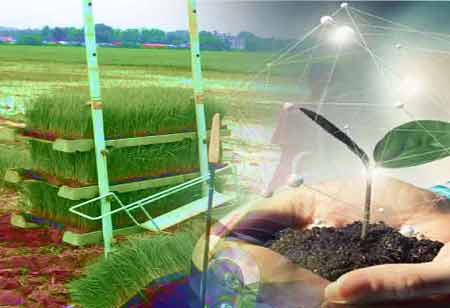Thank you for Subscribing to Agri Business Review Weekly Brief
Improving Farm ROI with Agtech
From an industrial standpoint, there are various obstacles to adopting agriculture technology (agtech),

By
Agri Business Review | Tuesday, May 02, 2023
Stay ahead of the industry with exclusive feature stories on the top companies, expert insights and the latest news delivered straight to your inbox. Subscribe today.
Investing in a coordinated effort to solve persistent challenges in ROI, cost, and data collection can enable agtech to play an even more central role.
FREMONT, CA: From an industrial standpoint, there are various obstacles to adopting agriculture technology (agtech), including fragmentation, the absence of a standardized data architecture, and a lack of cross-platform compatibility. Even while farm profitability has recently increased and there have been significant expenditures over the past ten years, innovation adoption is still low. The global commodities cycle has helped farmers in various ways; in many places, on-farm income peaked in 2021 and was forecast to stay close to record levels in 2022. On the other hand, an increase in inflationary pressure places farmers under a lot of pressure as they watch weather forecasts, keep up with legislative changes and cope with changing customer tastes, growing prices from inflation, and erratic supply chains.
The following are some cross-cutting trends in the agtech submarkets, while others affect specific markets disproportionately:
Barriers to entry: Farmers increasingly embrace agtech developments as possible tools for maximizing profits and lowering financial risk as they deal with shifting demands. According to a worldwide poll, 29 percent of farmers will employ at least one agtech product within the next two years. Nearly one in four farmers intend to alter their vendor and purchase strategy, while more than four in ten intend to test new goods to boost productivity. Rising input costs are one of farmers' top three worries regarding profitability over the next two years, according to 67 percent of farmers.
Farmers worldwide have legitimate concerns, stating that input costs have risen between 80 and 2500 percent in recent years. Asia's input costs have been least impacted, while South American farmers have been severely afflicted. Despite the high sales prices farmers are presently earning, there is a lot of uncertainty about future profitability due to the erratic nature of the commodities markets and the rising cost of inputs. As previous economic cycles have shown, a decline in commodity prices does not always coincide with a decline in input prices, which hurts farmers' bottom lines. This unpredictability encourages farmers to maximize their harvests, allowing them to integrate agtech advancements into their agricultural techniques.
Carbon footprint: As climate change's physical and financial effects intensify, investors and consumers worldwide increasingly turn to sustainable food systems. Nearly 30 percent of respondents to a recent research piece on mindful eating said they ate more sustainably produced food. Based on studies of investment in the industry, close to one-third of agtech start-ups would have a value proposition that is sustainability-focused. Start-ups and investors are reacting to these shifts in customer tastes and more general societal developments. Survey findings indicate that the direct acceptance of agtech has not yet coincided with investor and consumer opinion, particularly regarding sustainability and the adoption of more environmentally friendly agricultural methods.
Government requirements: About 40 percent of farmers in survey data indicate participating in government-sponsored sustainability initiatives, and these programs will determine the direction of agtech in the future. The adoption and innovation of agtech may be impacted by several legislative changes suggested during the past three to five years in a number of nations. Farmers who want to maximize the use of high-emission inputs in their operations might benefit from agtech solutions. Fertilizer use may be improved and enhanced while avoiding overapplication by employing high-resolution fertility maps in combination with variable fertilizer application rates. By integrating AI-backed machine vision and smart nozzle shutoffs, GPS-guided spray equipment may also increase the efficacy of herbicide application while avoiding expensive overlap.





